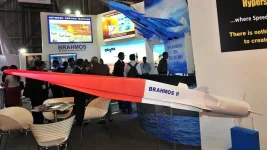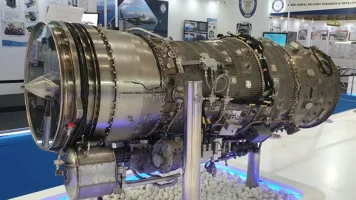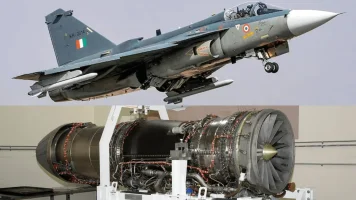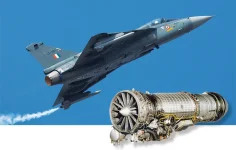- Views: 4K
- Replies: 19
India's ambition for a hypersonic cruise missile, the BrahMos-II, capable of reaching speeds between Mach 7 and Mach 8 (seven to eight times the speed of sound), is set to be powered by a domestically developed scramjet engine, according to Dr. Sudhir Kumar Mishra, the former head of both the Defence Research and Development Organisation (DRDO) and BrahMos Aerospace.
This development signifies a major leap in India's indigenous defence technology.
The indication of this advanced propulsion system follows a recent landmark achievement by DRDO. On April 25, 2025, scientists successfully conducted a ground test of a scramjet engine combustor for an unprecedented duration of over 1,000 seconds.
This successful trial is a critical step forward in India’s Hypersonic Cruise Missile Development Programme.
Speaking at the Powering Bharat Summit hosted by Network18 on May 16, 2025, Dr. Mishra shared insights into the progress. "A few weeks ago, we successfully tested a hypersonic engine," he announced.
"We will soon introduce a hypersonic missile that can achieve Mach 5 speed. All technologies for BrahMos were developed within DRDO; we even constructed the world's largest launcher ourselves."
He also stressed the reliability and international standing of India's missile systems, remarking that choices by other countries for Indian systems like BrahMos affirm their superior quality.
The significant DRDO test took place at the Scramjet Connect Test Facility in Hyderabad and was conducted by the Defence Research & Development Laboratory (DRDL). This experiment validated the design of a subscale scramjet combustor intended for long-duration flight and featuring active cooling.
The engine sustained combustion for more than 16 minutes, reportedly the longest such scramjet test conducted globally. This achievement highlights India's progress in crucial areas like thermal management, the durability of materials under extreme conditions, and stable combustion at hypersonic speeds.
The scramjet engine, designed to operate at speeds greater than Mach 5 (over 6,100 km/h), employs novel flame stabilization methods and a specially developed indigenous endothermic fuel, created in collaboration with industry partners, to improve cooling and ignition.
The engine's resilience under the intense heat of hypersonic flight is further ensured by advanced ceramic thermal barrier coatings, which can withstand temperatures that would melt steel.
Dr. Mishra described the existing BrahMos missile as a highly effective and versatile weapon, renowned for its exceptional precision and destructive power, making it extremely difficult to intercept.
The BrahMos system, a joint venture between India's DRDO and Russia’s NPO Mashinostroyenia, has undergone over 130 tests, leading to continuous enhancements. It currently stands as the world's fastest supersonic cruise missile, operating at Mach 3.5 with a range of up to 650 kilometres.
The forthcoming BrahMos-II is anticipated to significantly surpass these capabilities, with expected speeds of Mach 7–8 and a range of 1,500 kilometres. While it may draw some inspiration from Russia’s 3M22 Zircon hypersonic missile, the BrahMos-II is expected to integrate DRDO's indigenous scramjet technology.
The success of the 1,000-second scramjet engine test firmly places India among the leading nations in hypersonic technology, with this duration surpassing achievements like the United States’ X-51A Waverider test, which flew for 240 seconds, and positioning India competitively with research efforts in Russia and China.
Dr. Mishra’s statements imply that the BrahMos-II will utilize this homegrown scramjet engine, thereby reducing India's dependence on foreign technology and bolstering its strategic self-reliance in critical defence areas.
Public discussions, particularly on social media platforms like X, reflect considerable enthusiasm, with some projecting the BrahMos-II as a transformative weapon system that could be ready for deployment within approximately four years, offering a significant deterrent against potential adversaries.
The reliability of the BrahMos program, a point emphasized by Dr. Mishra through its focus on acquiring the best technical solutions (T1 procurement approach) rather than solely on cost, has cultivated strong confidence within the Indian Armed Forces.
This trust is demonstrated by substantial orders, including over 200 air-launched BrahMos-A missiles for the Indian Air Force and recent naval contracts for 220 missiles.
The development of BrahMos-II, with its advanced hypersonic capabilities, is poised to further solidify India's leading position in precision-strike warfare, fulfilling a long-standing vision, notably articulated by former President Dr. A.P.J. Abdul Kalam, for India to develop a market-leading hypersonic missile.





